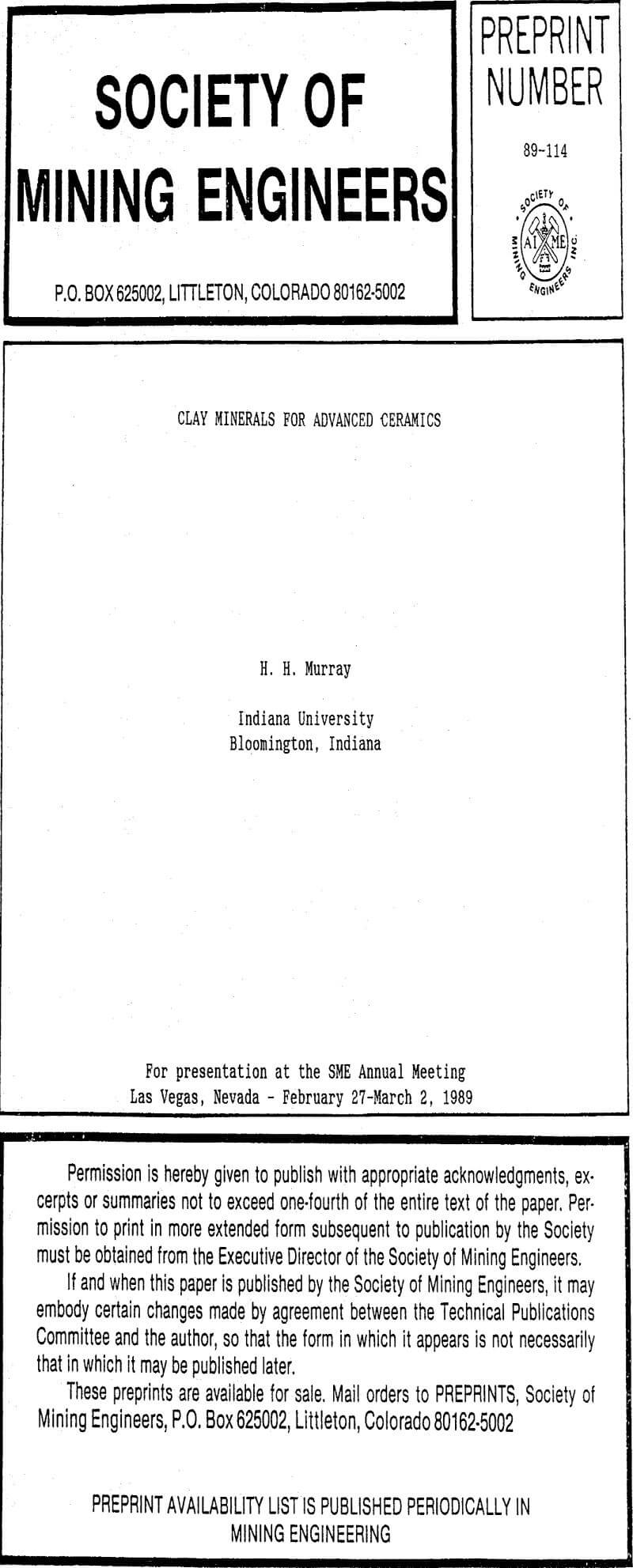 The term attapulgite and palygorskite are synonomous. Most mineralogists use the term palygorskite but attapulgite is the preferred industrial term. The structural formula of attapulgite is (OH2) (OH)2, Mg5 si8 O20 · 4H2O. The oxide composition of attapulgite is 53.64% SiO2 8.76% Al2O3, 0.60 TiO2, 3.36% Fe2O3, 0.23% FeO, 2.02% CaO, 9.05% MgO, 10.89% H2O+, 9.12% H2O, and 2.40% MnO. In the structure of attapulgite there is some substitution of aluminum for silicon and substition of magnesium, manganese, and iron for aluminum.
The term attapulgite and palygorskite are synonomous. Most mineralogists use the term palygorskite but attapulgite is the preferred industrial term. The structural formula of attapulgite is (OH2) (OH)2, Mg5 si8 O20 · 4H2O. The oxide composition of attapulgite is 53.64% SiO2 8.76% Al2O3, 0.60 TiO2, 3.36% Fe2O3, 0.23% FeO, 2.02% CaO, 9.05% MgO, 10.89% H2O+, 9.12% H2O, and 2.40% MnO. In the structure of attapulgite there is some substitution of aluminum for silicon and substition of magnesium, manganese, and iron for aluminum.
The mineral form is elongate which gives this clay mineral some unusual properties. A small amount (4% or less) added to porcelain material improves the molding characteristics and improves the strength. Elongate fine particle size attapulgite improves the plasticity (Grimshaw, 1971) of a ceramic body.
Attapulgite loses the internal pore water between 250° and 350°C and hydroxyl water is lost between 400° and 600°C. At 800° to 1000°C enstatite, mullite, and cristobalite form.
Attapulgite can be purified by using wet process beneficiation techniques so that impurities such as quartz, calcite, and dolomite can be removed. A pure fine particle size attapulgite can be produced which has potential applications in ceramics for its binding properties and chemical content. Attapulgite fuses at about 1500°C.
Attapulgite clays are sometimes referred to as sorptive clays because they have a large surface area and can absorb and adsorb many materials. The term fuller’s earth is more or less a catchall term for clays or other fine-grained earthy materials suitable for sorbent uses. Attapulgite is produced in the southeastern United States near the Georgia-Florida border in the vicinity of Quincy, Florida, and Attapulgus, Georgia. The major non-clay minerals associated with the attapulgite are quartz, calcite, and dolomite. These non-clay minerals can be removed by wet process beneficiation methods to produce a relatively pure attapulgite.
Related:
